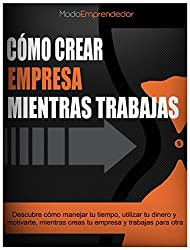
In this article you will know 2 stories that will serve as a context to explain why schools kill creativity.
The most watched TED talk of all time is called “Do schools kill creativity?” and has more than 49 million views. 4 million more than the second most viewed.
The speaker is Ken Robinson, creativity expert, former college professor, and author of The Elementa book of interviews with the likes of Richard Branson, Paul McCartney and Arianna Huffington about how they discovered their talent.
The talk itself is full of funny and heartwarming stories, but one in particular stands out one…
Gillian Lynne’s story.
It’s the story of Gillian Lynne, someone whom Robinson says not many people have heard of but whose work everyone knows. She is the choreographer behind works like cats Y Phantom of the Opera; among others.
Gillian didn’t start out as a huge success. In fact, when he was 8 years old, in the 1930s; Her school wrote to her parents to say that they thought Gillian had a learning disorder.
Also read: Brain hacking, achieve what you consider impossible.
So Gillian’s mother did what many parents would do: she took her daughter to a specialist.
Gillian sat on his hands for 20 minutes while the doctor and her mother talked about her problems: she teased the other kids at school, was late turning in her homework, never sat still, etc.
The specialist told Gillian: “I’ve heard all these things your mother told me, I need to talk to her in private. She waits here. We’ll be back, it won’t be long.”
The two adults went to leave the room. As they did so, the doctor turned on the radio. As soon as they left, he told Gillian’s mother: “Stand up and look at her.”
The explanation.
Like magic, as soon as they were gone, Gillian was on her feet, moving toward the music. She no longer had to sit in her hands, she could fully express herself; in the most natural way for her.
They stared at each other for a few minutes until the specialist told the mother: “Mrs. Lynne, Gillian is not sick…she is a dancer. She take her to a dance school”.
So she did. Gillian’s mother took her out of her traditional school and put her in a dance school.
After school, Gillian said: “I can’t express how wonderful it was. We entered a room and it was full of people like me. People who couldn’t sit still. People who had to move to think”.
Years later, Gillian Lynne became a member of the Royal Ballet. She contributed to some of the most famous musical theater productions in history; she was part of dance history and earns millions of dollars.
In 2014, at the age of 87, she was appointed a Dame Commander of the Order of the British Empire.
And, as Robinson points out, “Someone else could have given her medication and told her to calm down.”
The origin of the problem.
Approximately 11 percent of children ages 4 to 17 have been diagnosed with ADHD (Attention Deficit Hyperactivity Disorder), a percentage that is increasing every year.
That’s almost one in 10.
For three years, I worked with some of them. As a private tutor in New York City, I was assigned over and over again to students the system considered to have ADHD.
Nathan’s story.
We’ll call one of them Nathan. He was a bright, funny, athletic 13-year-old who hated writing articles, having to read about US history, and then doing a job.
Unfortunately, those activities were the only ones that could keep him sitting down; but Nathan didn’t like them at all.
During that same time, he spent four straight hours building a skateboard, with parts that rotated and moved; an engineering feat that he himself helped design. He did the research, executed it, and enjoyed the results. He did it basically effortlessly.
My point is this: there was nothing wrong with Nathan’s ability to focus, and there was nothing wrong with Gillian Lynne’s.
Why schools kill creativity.

In his talk, Robinson makes a clear argument that intelligence is multifaceted and includes creativity; and we run the risk of wasting it if we educate people the wrong way.
Also read: The 13 types of intelligence. Which is yours?
Some people need to move to think. Some need to build things with their hands. Others need to sing, play the piano, or both. Some know how to learn faster, not everyone learns the same way, and not everyone thinks the same way.
Seeing schools kill creativity and doing nothing will come at a very dangerous cost. Why?
Because our current education system systematically deprives children like Nathan and Gillian, and this causes extraordinary damage to girls’ and boys’ self-esteem – effects that lead to problems with anxiety and depression that can last for decades or a lifetime.
Furthermore, and perhaps the most pressing problem, as Robinson points out, is this: if we are going to survive in the next few decades, if we want to solve massive problems that threaten species, such as climate change, deal with fundamental changes in the market global finance, and navigate topics like artificial intelligence and the rise of robots; it will be by harnessing the creativity and skills of all members of our population. Not just those who excel in a school system that was designed to produce factory-ready people.
Conclusion.
The talk is amazing. Not just because it’s funny, wise and moving, but also because it’s a good reminder to all of us:
When it comes to intelligence, it’s not all it’s your head.
We must not only remember that, but create new systems that really contribute to change.
And remember, if you are really interested in creating your own business, you can read our book “How to create a company while working: Discover how to manage your time, manage your money and motivate yourself while creating a company and working for another” , where you will find all the information you need to found your own company, without having to leave your job.


Font

